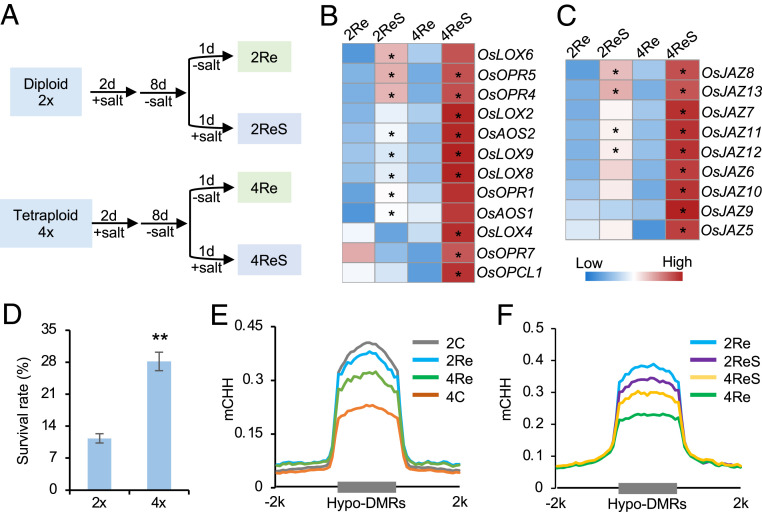Fig. 4.
Stronger activation of JA-related genes upon recurring salt stress in 02428 tetraploid rice. (A) Experimental design for recurring (first and second rounds of) salt stress. After salt treatment for 2 d, seedlings were recovered in nutrient solution for 8 d (diploid, 2Re versus tetraploid, 4Re), and treated by a second round of salt stress for 1 d (diploid, 2ReS versus tetraploid, 4ReS). (B and C) Expression levels (RPM) of JA biosynthesis (B) and signaling (C)-related genes in diploid and tetraploid rice after the second round of salt stress. A single asterisk indicates gene expression level difference before and after salt treatment in diploid and tetraploid rice, respectively (P < 0.05 and log2[fold change] ≥ 1). (D) Survival rates of diploid and tetraploid rice after the second round of salt stress for 12 d and recovery in nutrient solution for 5 d (n = 4 biological replicates). Double asterisks indicate statistical significance of P < 0.01 (Student’s t test). (E) CHH methylation levels in all samples without salt treatment (4C versus 2C) and upon recovery (4Re versus 2Re) using the hypo-DMRs between diploid and tetraploid rice under the control condition (4C versus 2C). (F) CHH methylation levels in all samples after the second round of salt stress using the hypo-DMRs between tetraploid and diploid rice upon recovery (4Re versus 2Re).

